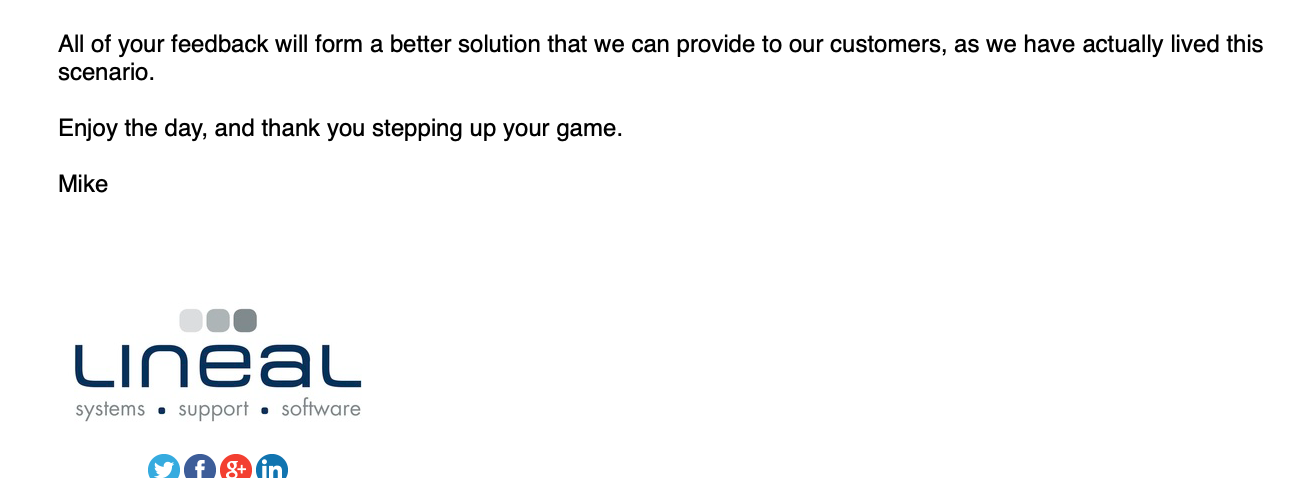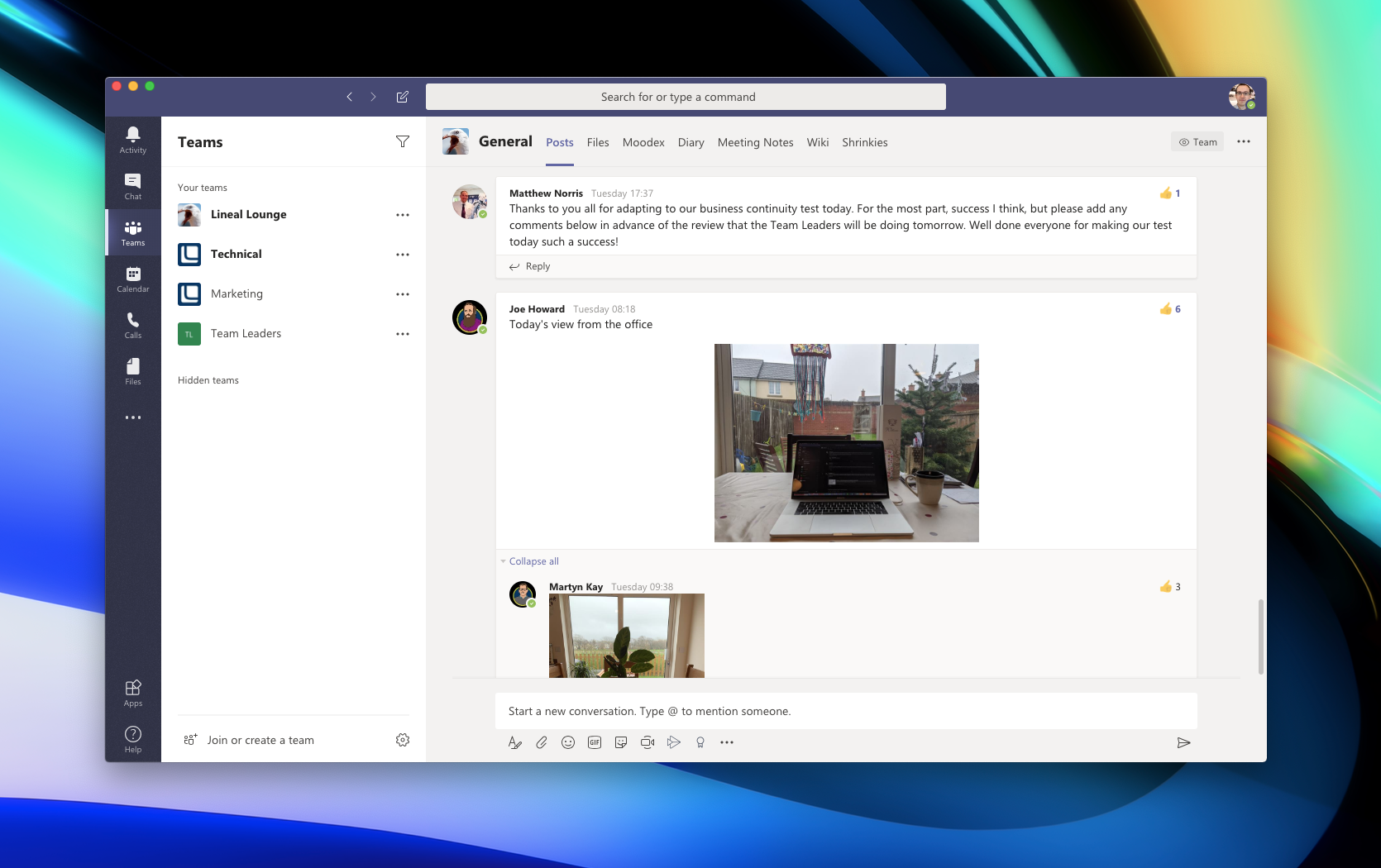
Edit: This article was originally published a few weeks before the first national UK COVID lockdown, 2020 – and has been left in its original form.
“All Staff Meeting” it said in the diary, and that was unusual. While both Lineal’s technical and non-technical teams meet regularly, it is rare that they are all required to gather at once on a Monday. Something was up.
“Tomorrow…” announced Mike, “… you’re all going to work from home. Lockdown: you have two hours to prepare.”
Tuesday 10th March would be a complete quarantine drill day. Staff would attempt to replicate everything Lineal does while working remotely – from home in most cases, but in physical isolation from each other. The scenario would be a practice run for either a coronavirus isolation scenario, or a catastrophic on-site evacuation incident such as severe flooding.
We would be permitted to visit clients if required, make preparations for home working, and to remove any equipment we might need from Commercial House in advance – providing we did so within the 2 hour advance warning period.
The business operations of our clients would remain critical throughout, so everything would need to operate as normal, with the quarantine remaining effectively ‘secret’.
(Lineal staff first begin finding out about the quarantine drill. Approx. 1430hrs Monday.)
The problem with working in a technology business is that you rely on a lot of technology. Two hours isn’t a long time to coordinate twenty-six people, so putting Lineal’s Business Continuity Plan into practice isn’t as easy as asking if everyone has memorised the document.
First: untether from the desk. Staff without laptops would need to be issued them quickly, and everyone remove their device from the building. Fears of a burgeoning black market in charging cables proved unfounded, and by late afternoon everybody had what they needed.
“.. those who have had close contact will be asked to self-isolate at home for 14 days from the last time they had contact with the confirmed case ..”
(Gov.uk, “COVID-19 Guidance for Employers and Businesses”)
Web-based and other cloud services such as Microsoft Office 365 would be accessed over home broadband connections, with the same security controls as staff normally use while remote working.
 |
Good luck everyone!
As always, IT Support engineers would depend on remote assistance software to help end-users, and need to ensure good communication at all times. Throughout the process, staff were encouraged to note their experience of the experiment and highlight issues for review.
Secure access to Lineal’s internal networks, and all the systems that sit behind it, would be granted to our team via a secure Virtual Private Network (VPN).
Top tip #1: Familiarise yourself with the mobile hotspot on your smartphone, because the 4G connection is a useful way to test that your VPN will connect successfully, before actually leaving your place of work.
Tuesday Morning
Everyone was connected remotely to all our business continuity systems, which granted access to Lineal’s in-house telephony, shared workspaces in Microsoft Teams, and SQLWorks business management software.
Without a physical desk phone at home, staff would instead use a desktop softphone on their PC, continuing to handle and transfer calls exactly as before – relying on status indicators to gauge each other’s availability, similar to how they would with their existing desk phone.
Microsoft Teams would permit instant message and document sharing – and facilitate video conference calls and screen-sharing with clients who were often otherwise unaware that Lineal’s offices had gone dark for the day. Teams rapidly became the preferred method of quick communication between individuals or small groups – with a rapid problem-solving chatter sitting below the level of email.
Incoming and outbound call volumes were actually slightly higher than usual, as staff continued not just taking customer calls, but calling each other more regularly due to the lack of physical proximity. The relative ease through which individuals would usually interact was replaced through Teams, and more conference calls, later reflected in higher Teams user activity.
 |
Lineal Microsoft Teams User Activity: 3rd – 10th March
Top Tip #2: To enable full home-working, you need not just a unified communications tool, but more call volume ‘capacity’ than normal.
Full remote-working is an interesting exercise because it forces your team to reconsider elements of the operation everyone takes for granted. For example, our teams regularly make use of meeting rooms and spaces at the Lineal office in order to work on projects and meet with customers.
In a geographically distributed “virtual” world, these meetings need to take place in different ways. Generally, tools like Teams make an excellent substitute and the result is a far more focussed experience which achieves the shared aims of the meeting, but with slightly less social interaction than you would expect when meeting face to face.
 |
(Business as usual, with rising call volumes)
Although the practice of full home-working is dramatically easier than it once was, and potentially hugely cost-saving, several staff reported feeling a little isolated. We’ll be incorporating all our staff’s feedback into our Business Continuity planning, and continue to make improvements.
How to Plan:
Have a Plan Saved in your email drafts – detailing what needs to happen in the event that a significant number of staff need to be sent home. Worry about things in this order:
1. Basic Connectivity & Communication
How will your staff connect to your IT remotely, and how will they communicate with each other. The checklist runs as follows: hardware, cables, broadband and communications tools. These are the most fundamental tools for both work, and circumventing any other problems your team encounters.
2. Access to Work Files
In the short term, staff otherwise isolated from systems can still process documents productively – If you’ve moved to Office 365, G-suite or cloud-storage platforms like OneDrive or Dropbox, this should be easiest workplace task to provide access for.
3. Access to Databases
Operating cloud-based? That will help. However, remotely connecting to non-cloud, ‘on-site’ systems such as accounting, stock control and other vital software will rely on external access to your network – for example via VPN.
This is likely to be unfamiliar to many end users used to working from the office – start with the users that most need it for the continued operation of the business, such as mission-critical staff or more senior accounting managers.
4. External Permissions
What systems do you need access to that are operated by third-parties. Remote equipment? Agency resources? Supplier portals? If these are web-based they may be accessible from anywhere, but make sure this is the case. To dramatically simplify this one, don’t run an IT company!
5. Support Structure
If you’ve never worked entirely from home before, it can feel strangely isolating. Guidance from NHS England currently states coronavirus self-isolation should last as long as two weeks, so check regularly that your team are coping OK. Encouraging emails, chat channels, funny gifs, team calls and the like are more important than you might think.
***This page will be updated with links to new guidance, as required.***
For business continuity technology and expertise, please contact Lineal today.



